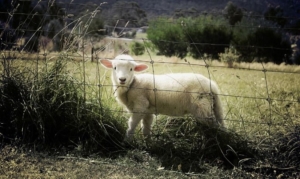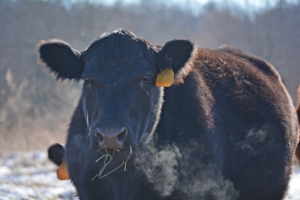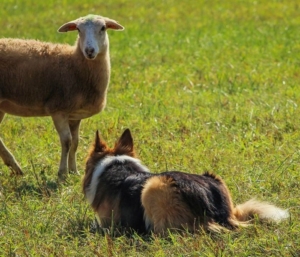How to Tackle Coyote Effects on Livestock
As a farmland owner or ranch manager, it’s likely you’ve got a few animals running around on your property. Cattle, sheep, and goats can all have important roles on a farm and can mean a lot to your financial well-being too. So when you suddenly develop a coyote infestation, it’s understandable to get a little-worked up. Coyote attacks on livestock can be commonplace and devastating for small herd managers. But what’s the real story behind this? In this post, we’ll look at coyote effects on livestock from statistics reported to the USDA, as well as some protective measures to implement on your farm if you’re having this problem.
Coyote Effects on Livestock
First, coyote effects on livestock vary by species and region. Some farm animals are more prone to predation by coyotes than others and the coyote population is higher in some areas as well. But here are a few types of animals you may have on your farm, and how coyotes might affect them.
Coyotes and Sheep
According to a USDA report from 2015, coyotes accounted for the highest predator losses on farm operations with more than 25 sheep. Incidentally, dogs accounted for the highest predator losses with operations less than 25 sheep. Of all the predator-caused sheep deaths in 2014, 54.3 percent were due to coyotes, and the percentage was even higher for lambs (63.7 percent).
So it’s absolutely clear that there are coyote effects on livestock, but let’s provide a little more context. While coyotes were responsible for killing over half of the sheep that were lost to predators, the actual losses attributed to predators accounted for only 1.8 percent of all adult sheep and 3.9 percent of all lambs in 2014. That means coyotes were directly responsible for removing only 0.9 percent of all adults and 2.4 percent of all lambs in the inventoried U.S. population.
Coyotes and Goats
Further, according to a USDA report from 2017, coyotes and dogs accounted for the highest predator losses on adult goats and kids combined. Of all the predator-caused goat and kid deaths in 2015, 43.1 percent were due to coyotes. As with the sheep, there were 38,880 goat deaths caused by predators throughout the U.S. in 2015. Compared to the total inventory of goats in the U.S., that means coyotes were responsible for killing only about 0.5 percent of all goats and kids in 2015.
Coyotes and Cattle
Finally, according to a USDA report from 2017, coyotes accounted for the highest percentage of cattle deaths due to predators (40.5 percent) in 2015, which is a little shocking considering the size difference. And of all the predator-caused calf deaths in 2015, 53.1 percent were due to coyotes. In all, coyotes were responsible for killing about 0.02 percent of all adult inventoried cows on cattle ranches in 2015 and about 0.37% of all inventoried calves.
Livestock Protection Measures and Options
When you compare the coyote-related deaths compared to the total livestock population across all states, the coyote effects on livestock are a bit more reasonable. Adult sheep and lambs are the most affected of these three species, as a measure of the total population. But if you’re a farmer who’s having coyote problems, it probably doesn’t feel all that reasonable to you. While you can often seek help from state or federal agencies when you’re having depredation issues on your animals, sometimes there are program limitations or maybe you’re not interested in that route. So here is how to protect livestock from coyotes – you have a few options available to you.
Lethal Control
Many farmers tend to opt for this route where legal and possible. It consists of shooting, trapping, or otherwise killing coyotes yourself or having government programs remove them. Coyote hunts can be very challenging and will test you as a hunter, as they are very smart and wary animals. For that reason alone, some people might even want to lease your land. This seems like it would be one of the easiest and most effective options to control coyote populations. But there’s a lot of research out there these days that questions how truly effective it is. Since coyotes are very territorial, removing individuals opens up new territories for others to use. With fewer individuals, reproductive rates and pup survival often increase in the local population. And with larger families, coyotes need to kill more or larger livestock to feed their pups. To further add to the issue, if you remove a dominant coyote that does not kill your livestock, you may open the floodgates to a bunch of younger ones that didn’t kill your animals because of that “guard coyote” – but now they will. It can quickly become a devastating cycle.
Non-Lethal Control
So instead of risking this cycle, here’s how to deter coyotes from livestock in a non-lethal way. The best defense against coyotes is often being more present on your farm. Both humans and guard/shepherd dogs (e.g., Great Pyrenees) can deter predators very effectively. When you observe them, go out of your way to harass and frighten them. Keep switching up the times you visit your herd if possible, to keep them from patterning you. Installing better quality fencing and pens/enclosures can also keep your herd safer when you’re not physically able to keep watch over them. Electric fences are excellent repellants. Another popular option is to mix up the species in your herds. For example, while sheep and goats are more vulnerable to coyote predation, donkeys and llamas are not; in fact, they are very aggressive towards them and can protect their own little herds. Even training your cows and sheep or goats to live together in the same pasture can help provide additional protection for them.
Are Coyotes Bad?
As the statistics above show, there are definitely coyote effects on livestock. Of all the various predators out there, coyotes tend to have the largest effect on cattle, sheep, and goats. Of course, there are regional differences too. Some parts of the country may have more problems with wolves, bears, or other predators, but coyotes seem ever-present. Does that mean they should be eradicated on your farm? It depends on who you ask, but probably not. They are remarkably adaptable animals, and you can’t help but admire their survival instincts a bit. And as additional research is concluding, removing coyotes may just cause more coyote predation issues. So if you’re going to raise livestock, it’s up to you to find a good balance between coexisting and managing coyote populations.
Leasing the Hunting Rights on Farmland and Pastures
Making a living off the land is not for everyone. But understanding how to utilize the resources wisely to generate a payday is a big part of a landowner’s success. Every farmer has a plan to generate revenue for the year from row crops to timber harvests to CRP, making sure that you are sustainably working the land is critical. Leasing your property is an noninvasive way to generate revenue from your farm ground, while also providing protection against trespassing and controlling detrimental wildlife populations that could be causing significant crop damage. By reaching out to Base Camp Leasing and its team of land appraisal experts, you will be earning supplemental income from your property in no time, while protecting your land from unwanted people and animals.




I have read in some instances, removing coyotes supposedly increases population. However they’re basing this off litter size. An area can only sustain so many predators, so logic would say less coyotes will increase litter size. However, having personal experience with owning sheep for decades, I can positively say hunting and trapping coyotes makes a huge difference in lamb survival. I was losing 15 to 20 lambs a year. Purchased 2 donkeys, they never did anything as far as stopping the attacks. 5yrs ago I leased my land to 2 coyotes hunters. To date I have lost 3 lambs in 5 yrs. An amazing improvement.
Joe – there are studies that show that once you rid an area of a coyote population that there is then a void for other coyotes to move in, especially if one of the dominant mating couple is removed from the area. All ranchers can do is continue to do their due diligence for predator management.